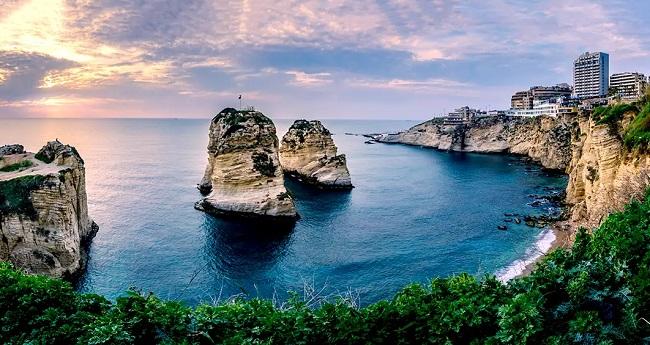Lebanon is a country rich in history, culture, and natural beauty. From the vibrant streets of Beirut to the serene cedars in the mountains, Lebanon offers a unique blend of experiences. Discover the top 10 destinations in this Mediterranean gem.

Top 10 Most Visited Places in Lebanon
1. Beirut
Overview
Beirut, the capital city, is a bustling metropolis known for its rich history, cultural diversity, and vibrant nightlife.
Why Visit?
Explore the National Museum of Beirut, stroll along the Corniche, and experience the city’s famed culinary scene.
2. Baalbek
Overview
Baalbek is home to some of the most impressive Roman ruins in the world, including the Temple of Bacchus and the Temple of Jupiter.
Why Visit?
Marvel at the ancient architecture, learn about the site’s historical significance, and attend the Baalbek International Festival if you can.
3. Byblos
Overview
Byblos is one of the oldest continuously inhabited cities in the world, offering a glimpse into ancient civilizations with its historical sites and charming harbor.
Why Visit?
Visit the Byblos Castle, wander through the old souks, and enjoy fresh seafood by the Mediterranean.
4. Jeita Grotto
Overview
The Jeita Grotto is a system of two separate, but interconnected, karstic limestone caves offering an extraordinary natural wonder.
Why Visit?
Take a boat ride through the lower grotto, walk through the upper grotto, and marvel at the stunning formations.
5. The Cedars of God
Overview
The Cedars of God in Bsharri are ancient cedar trees that are a symbol of Lebanon and part of a UNESCO World Heritage Site.
Why Visit?
Witness some of the oldest cedar trees in the world, hike in the beautiful surrounding mountains, and enjoy the serene atmosphere.
6. Anjar
Overview
Anjar is unique among Lebanese cities for its layout, with a very regular rectangular city plan that showcases Umayyad-era ruins.
Why Visit?
Explore the archaeological site featuring ruins of an 8th-century city with unique Islamic architecture.
5. The Cedars of God
Overview
The Cedars of God in Bsharri are ancient cedar trees that are a symbol of Lebanon and part of a UNESCO World Heritage Site.
Why Visit?
Witness some of the oldest cedar trees in the world, hike in the beautiful surrounding mountains, and enjoy the serene atmosphere.
6. Anjar
Overview
Anjar is unique among Lebanese cities for its layout, with a very regular rectangular city plan that showcases Umayyad-era ruins.
Why Visit?
Explore the archaeological site featuring ruins of an 8th-century city with unique Islamic architecture.
7. Sidon (Saida)
Overview
Sidon is a historical coastal city that was a crucial Phoenician port, and today offers a rich cultural experience with its Crusader Sea Castle and vibrant souks.
Why Visit?
Tour the Sea Castle, visit the Soap Museum, and meander through the old souks for an authentic glimpse into Lebanese life.
8. Tyre (Sour)
Overview
Tyre is another ancient Phoenician city, rich in historical sites including Roman Hippodrome and a vast necropolis.
Why Visit?
Walk through the ruins of one of the largest Roman hippodromes, enjoy the sandy beaches, and explore the vibrant marketplaces.
9. The Chouf Mountains
Overview
The Chouf Mountains are known for their natural beauty, Druze heritage, and the Beiteddine Palace, which is a fine example of Lebanese architecture.
Why Visit?
Hike the trails of the Al Shouf Cedar Nature Reserve, visit the Beiteddine Palace, and experience the traditions of the Druze community.
10. Tripoli
Overview
Tripoli, Lebanon’s second-largest city, is famed for its Mamluk architecture, bustling souks, and the imposing Citadel of Raymond de Saint-Gilles.
Why Visit?
Explore the Old City, shop in the souks, and try local delicacies like sweet kaak and Tripoli’s famed sweets.
In Summary
From the time-worn cedar forests to the storied streets of its ancient cities, Lebanon presents a canvas where the past and present merge seamlessly.
Each of these ten destinations offers a window into the heart of the Middle East, promising experiences steeped in history and alive with cultural richness.


















































